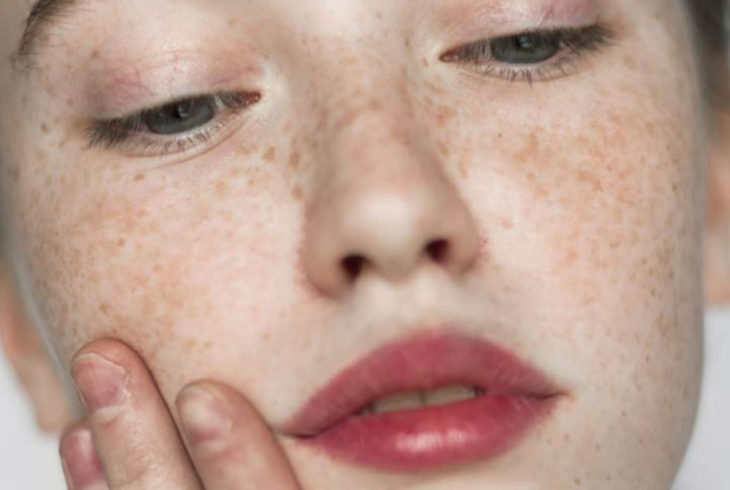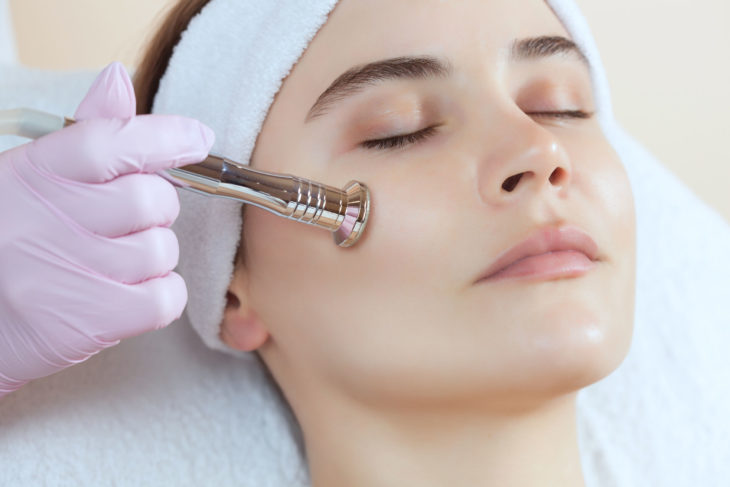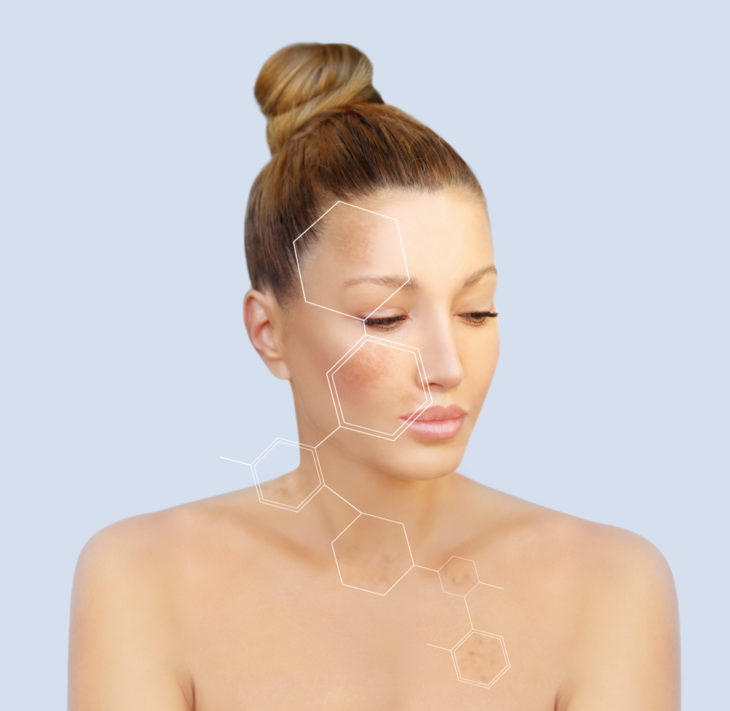Hyperpigmentation refers to the dark spots on the skin. It occurs when the skin starts to produce melanin more than it should. Melanin is the pigment that defines the color of our skin. Hyperpigmentation is the condition that is fairly common and can affect anyone, however, people who spend more time in the sun are more prone to developing sunspots on the exposed body parts such as arms, legs, and face. This condition can also develop on any body part if it is caused by any skin injury such as acne, cuts or burns, or because of lupus.
Common symptoms and causes

Source: beyoutifulmag
The two most common causes of hyperpigmentation are sun and age. This is why they are known mostly by the names of sunspots or age spots. They usually appear on the face, hands, arms, and legs. These are flat and small skin patches that can be a light brown or darker brown. These patches mostly appear on the skin of people older than 40 and women particularly find this skin condition problematic. However, it can happen much earlier, depending on the way your skin reacts to the sun.
During the women’s life, hormone levels change significantly, which can reflect on the way your skin looks. Pregnancy, birth control, and menopause can play a major role in developing skin conditions such as hyperpigmentation.
The conditions associated with the hyperpigmentation are Addison’s disease and related illnesses concerning adrenal insufficiency, as well as Cushing’s disease and excessive ACTH (adrenocorticotropic hormone). Other conditions that can be connected with hyperpigmentation are:
– acne scarring
– Coeliac disease
– Porphyria
– melasma
– mercury poisoning
– Nelson’s syndrome
In most cases, the reason behind the changes on your skin is caused by the sun and does not cause a threat to your health, but it is still necessary to determine the cause in order to get the right treatment. Being responsible for your health is essential and can save your life in some cases. Melanoma is a form of cancer that should be taken very seriously and has a better success rate for treating when caught in the early stages.
The best treatments

Source: botanicadayspa
Depending on the cause of your hyperpigmentation, the doctor will prescribe the therapy accordingly. When it comes to age or sun spots, the usual treatments are topical creams and cosmetic procedures. Topical treatment is usually the first line of defense that most people choose and they all have ingredients for lightening the skin:
– vitamin C
– retinoids
– kojic acid
– hydroquinone
– corticosteroids
– azelaic acid
Using creams rich in vitamin C has shown significant results in treating discoloration. Vitamin C inhibits the production of tyrosinase and consequently melanin, but it also treats the spots that are already visible. Retinoids are also very useful when it comes to treating discoloration. Perhaps the most known retinoid is Retinol. It can speed up the rejuvenation of the skin, but it can cause sun sensitivity, irritation and skin dryness, so it is necessary to be careful when using it as a form of treatment.
Kojic acid has shown significant advantages in treating discoloration of the skin, but before using it, it is necessary to consult with a doctor. Hydroquinone is a cream for bleaching skin. It is recommended for patients who are more than 13 years old. Its effect is not permanent and the discoloration of the skin can develop again. Corticosteroids are one of the treatments that are very effective in treating hyperpigmentation. Azelaic acid is usually used for treating acne, but it can also be used for treating discoloration.
Each of these treatments has positive effects, but it can also have some side-effects, so it is necessary to discuss with the doctor about all the possible treatments that could help you and make a decision based on all the information you get. Creams are definitely a number one way to fight the discoloration, but if you want to get fast results, then you should consider choosing cosmetic procedures that can help you deal with your skin issue. When it comes to the cosmetic procedures available, those are:
– microdermabrasion
– chemical peels
– intense pulsed light
– laser therapy
Microdermabrasion treatment is the treatment for gentle removal of the outer layer of the skin. It is a great treatment for patients who want to treat discoloration, light scarring, stretch marks and traces of sun damage. A chemical peel is a procedure of applying a chemical solution to the skin with the intention of removing top layers of the skin. The skin rejuvenates after the treatment and looks much younger and smoother. This treatment is good for treating scars, discoloration, and wrinkles.
Intense pulsed light or IPL is a treatment that involves using light to treat pigmentation of the skin and many other skin conditions. Laser treatment is an advanced treatment for treating hyperpigmentation and it can remove more than 70% of excess melanin during just one treatment.
Which one you choose depends on many factors and you should consult with a doctor before making a decision. Each of these treatments has advantages. If you want to learn more about hyperpigmentation, click here clarinsusa.com.
Prevention is important

Source: myhealthydermis
Prevention is better than cure, we’ve all heard it many times. However, it is not always possible to keep that in mind. If dark spots are caused by sun exposure, then the answer is pretty clear what you need to do to prevent your condition from getting worse – avoid the sun. Also, it is necessary to use sunscreen to protect your skin from harmful UV rays.
More than 40% of women share a concern about sunspots because it can sometimes be a very serious esthetic problem. Using brightening lotions can significantly improve the way your skin looks. It is also very helpful to avoid being exposed to the sun during the hottest hours and to cover the skin with light fabric. Wear a hat if your skin is sensitive and prone to hyperpigmentation.
